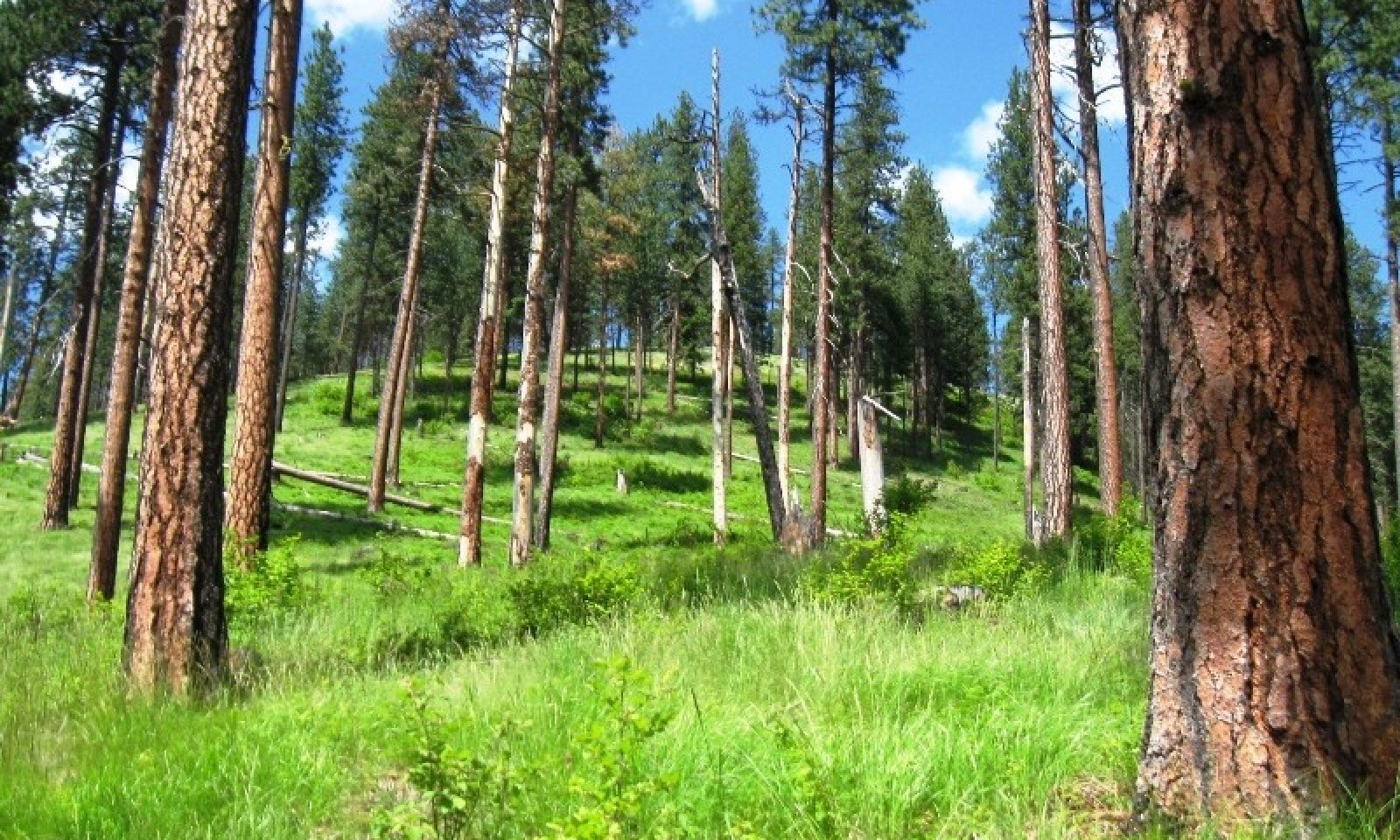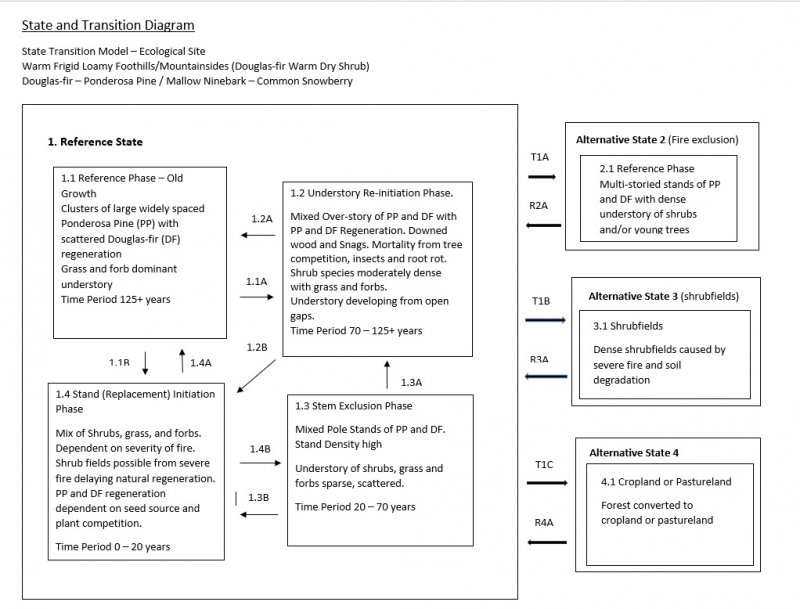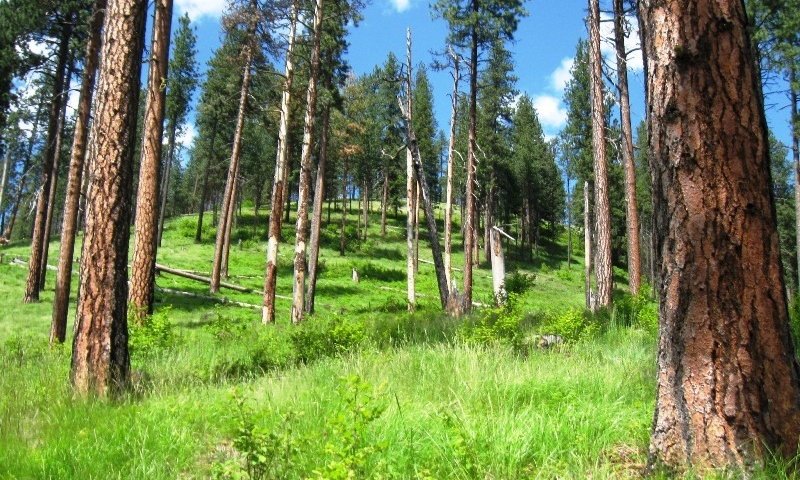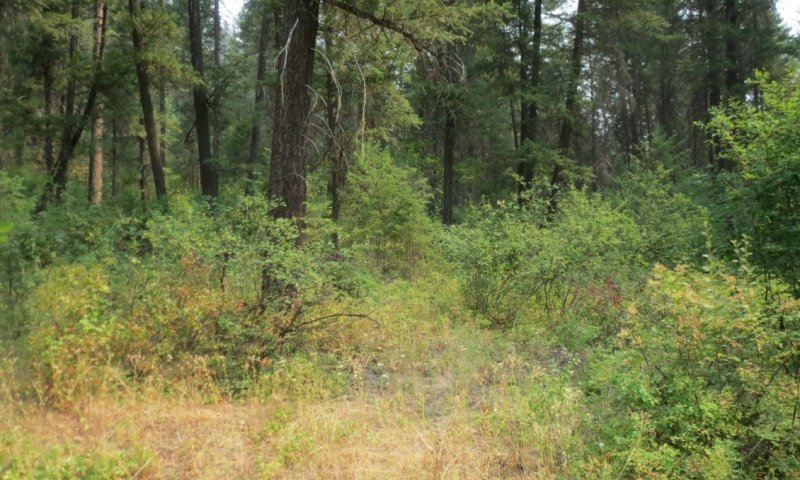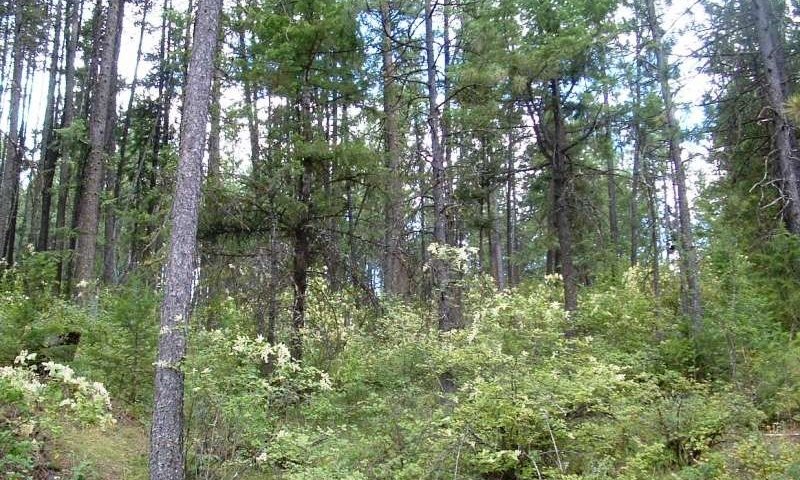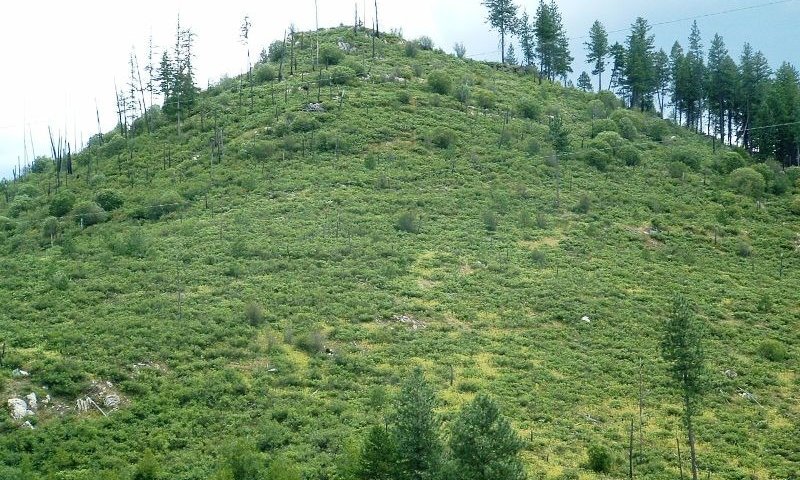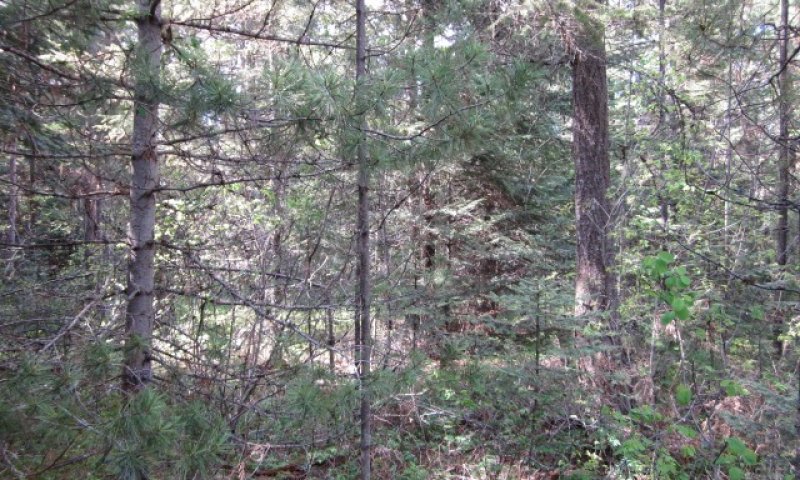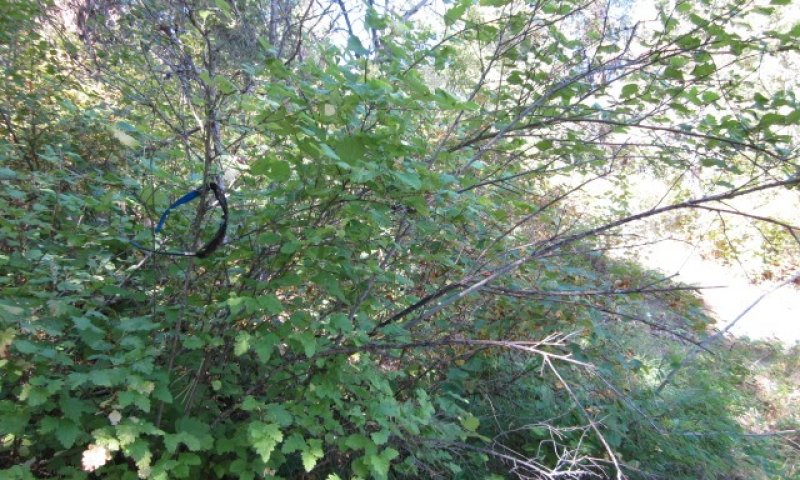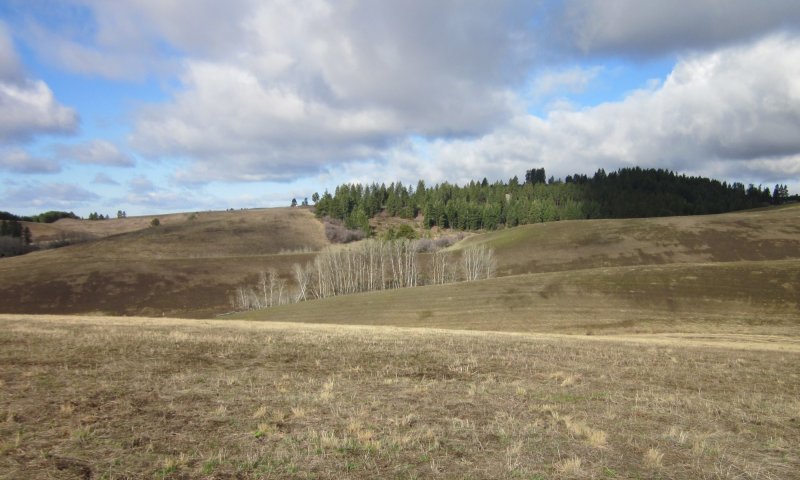Ecological dynamics
Ecological Dynamics of the Site
The reference state occurred before European settlement when frequent low intensity fires created open stands of large ponderosa pine with a grass dominated understory of pinegrass. Patches of Douglas-fir regeneration will be present. On the lower foothills this ecological site occurs on north and east slopes. On upper mountainous terrain it will occur on southern and western aspects. Sites escaping frequent fire will have a patchy mosaic of older large trees with patches of regeneration, pole stands of ponderosa pine and Douglas-fir, and a mixture of shrubs, grasses and forbs. Bark beetle and root disease mortality will create snags and woody debris. Severe stand replacing fires can result in ceanothus shrub fields dominating for several years until natural regeneration of pine and Douglas-fir reclaim the site. In other less severe burned areas, grass and sedge species will dominate along with sprouting shrubs like ninebark, oceanspray, and snowberry.
Lack of fire or fire exclusion crosses a threshold and the site goes to another state. State 2 results in homogenous multi-storied stands of ponderosa pine and Douglas-fir with dense understories of regeneration and/or shrubs. Snags and wood debris are lacking. These stands are highly susceptible to stand replacing fires. Much of the acreage of this ecological site is in this condition. Timber stand improvement and fuel removal treatments along with prescribed fire can restore this site to a more open patchy landscape more resistant to severe fire.
In Alternative State 3 severe fire has damaged soil nutrient capacity with shrub fields of ceanothus species dominating the site for 50+ years. This condition more commonly occurring on south and west facing slopes. Restoration activities must be scrutinized on a site by site basis.
In Alternative State 4 some of the lower landscape portions of this ecological site have been converted to introduced grass pastures or annual cropland. Restoring this site to the reference state takes major inputs in site preparation, tree planting, vegetation control, fuels management and other silvicultural treatments.
State 1
Reference
This state recognizes two forest habitat types Douglas-fir/ninebark and Douglas-fir/snowberry. They occur in close proximity and react similarly. Douglas-fir/snowberry will occur at lower landscapes and sometimes in a moister environment, snowberry being the prominent understory shrub. Ninebark and oceanspray dominate the understory of the modal Douglas-fir/ninebark habitat type. Pinegrass is the dominant grass. They occur on foothills on northern aspects at lower elevations under 3000 feet and on eastern and western aspects on mountain sides over 3000 feet. Western larch is not present on the modal soils of this state. Western larch can occur on the moister Douglas-fir/ninebark/twinflower habitat type phase and wetter Douglas-fir/snowberry sites. Wartberry fairybells and russet buffaloberry are more constant on the on the moister Douglas-fir/ninebark/twinflower site.
With frequent low severity ground fires stand develops into an open stand of mostly large ponderosa pine with scattered ponderosa pine and some Douglas-fir regeneration with shrub patches mixed with grasses, mainly pinegrass, elk sedge, and Columbia brome.
Community 1.1
Reference Plant Community
This phase would be considered the historical plant community. Frequent low severity fires create an open stand of mostly large diameter 100+ year old ponderosa pine with some Douglas-fir. Tree regeneration is patchy consisting mainly of ponderosa pine with some Douglas-fir. Understory vegetation is a mix of shrubs, forbs and grasses. This phase perpetuates itself with reoccurring low intensity fires with some of the pine and fir regeneration surviving to mature stage.
Dominant plant species
-
Rocky Mountain Douglas-fir (Pseudotsuga menziesii var. glauca), tree
-
ponderosa pine (Pinus ponderosa), tree
-
common snowberry (Symphoricarpos albus), shrub
-
white spirea (Spiraea betulifolia), shrub
-
Saskatoon serviceberry (Amelanchier alnifolia), shrub
-
mallow ninebark (Physocarpus malvaceus), shrub
-
oceanspray (Holodiscus discolor), shrub
-
dwarf rose (Rosa gymnocarpa), shrub
-
creeping barberry (Mahonia repens), shrub
-
pinegrass (Calamagrostis rubescens), grass
-
Geyer's sedge (Carex geyeri), grass
-
Columbia brome (Bromus vulgaris), grass
-
feathery false lily of the valley (Maianthemum racemosum ssp. racemosum), other herbaceous
-
heartleaf arnica (Arnica cordifolia), other herbaceous
Community 1.2
Understory Re-initiation
Without frequent low severity fire this plant community develops into an all aged stand of Douglas-fir and ponderosa pine with scattered remnants of old ponderosa pine. Two to three tree canopy levels can develop with an understory of ninebark, oceanspray and/or snowberry. Canopy openings can develop from windthrow or root rot pockets creating openings for Douglas-fir regeneration or shrubs. Stand is susceptible to stand replacing fires due to large fuel load and ladder fuels. Mixed severity fires will produce a mosaic of patchy large older trees with open areas of regeneration and/or dense shrubs or grass.
Community 1.3
Stem Exclusion
Overstory structure consists of dense one story pole stands of Douglas-fir and ponderosa pine 30-70 years old. Dense stocking creates high fire hazard and stress conditions for bark beetle attack. Armillaria root rot pockets can be present in Douglas-fir.
Community 1.4
Stand (Replacement) Initiation
Stand replacing fires or lack of reforestation after harvest, can create dense shrub fields mixed with grass. After severe fires Ceanothus velutinus, shiny leaf ceanothus, can dominate the site and limit tree regeneration if soil duff is destroyed and surface soils are damaged. This may cause this phase to go to Alternative State 3. Natural regeneration is variable depending on fire severity. Scouler willow can also be prevalent along with pinegrass and elk sedge. In low intensity or mixed severity fires Ponderosa pine and Douglas-fir will eventually occupy the site. Future ground fires will create a patchy landscape of tree clusters and shrub/grass areas.
Pathway 1.1A
Community 1.1 to 1.2
Reference Plant Community
Fire return interval extended allowing regeneration to grow and mature. Stand mortality start to occur.
Pathway 1.1B
Community 1.1 to 1.4
Reference Plant Community
Stand (Replacement) Initiation
Stand replacement disturbance. Severe Fire or insect mortality killing large pine/fir.
Pathway 1.2A
Community 1.2 to 1.1
Reference Plant Community
Pathway 1.2B
Community 1.2 to 1.4
Stand (Replacement) Initiation
Stand replacement disturbance. Severe Fire or insect mortality killing large pine/fir
Pathway 1.3A
Community 1.3 to 1.2
Time and localized disturbance. Stand competition mortality and insect/disease mortality creating gaps for understory development and tree regeneration
Pathway 1.3B
Community 1.3 to 1.4
Stand (Replacement) Initiation
Stand replacement disturbance. Severe fire back to grass/shrub stage with periodic natural tree regeneration
Pathway 1.4A
Community 1.4 to 1.1
Stand (Replacement) Initiation
Reference Plant Community
Time. Low severity ground fires every 10-20 years to create patchy open grown ponderosa pine and Douglas-fir with grass dominant
Pathway 1.4B
Community 1.4 to 1.3
Stand (Replacement) Initiation
Time with fire return interval extended to allow natural tree regeneration to grow into dense pole stands
State 2
Fire Exclusion
Since European settlement the fire regime has changed greatly reducing frequent low intensity ground fires that kept these forests more open, with reduced tree density more resilient to severe intensity fires. In addition, years of hygrading (harvesting largest best trees on site), overgrazing, prevalence of many roads which create fire breaks, and tree plantations has created a different forest structure. Dense multi-layered forests of Douglas-fir and ponderosa pine now exist and is homogenous on the landscape. Intensive forest management practices can reduce the risk of severe fire.
Community 2.1
Reference Phase
Multi-level canopy of mature Douglas-fir and ponderosa pine over sapling/pole/seedling stands of Douglas-fir and ponderosa pine. In areas without tree regeneration dense stands of shrubs will occur, mainly ninebark, oceanspray, or snowberry. Forest management practices which include selective overstory removal along with understory fuel load management, including prescribed fire, can transition the forest into a more drought, insect and fire resilient condition.
State 3
Shrubfields
Shrub species like shiny leaf ceanothus, Scouler willow, spirea, ninebark, oceanspray thimbleberry, snowberry, chokecherry and elderberry dominate the site preventing tree establishment. Reoccurring fires keep site in shrubfield condition.
Community 3.1
Reference Phase
Shrub species like shiny leaf ceanothus, Scouler willow, spirea, ninebark, oceanspray thimbleberry, snowberry, chokecherry and elderberry dominate the site preventing tree establishment. Reoccurring fires keep site in shrubfield condition
State 4
Converted
A portion of this ecological site has been converted to annual cropland or pasture. This has occurred on the lower slope foothills and valleys. Intensive tree establishment practices followed by prescribed fire once the trees are more fire resistant can lead to ecological functions of State 1.
Transition T1A
State 1 to 2
Fire exclusion over long periods allowing stands to grow into homogenous multi-storied stands
Transition T1B
State 1 to 3
Shrubfields caused by severe fire and soil degradation
Transition T1C
State 1 to 4
Forest stands converted to cropland or pastureland
Restoration pathway R2A
State 2 to 1
Forest stands restored by overstory thinning, ground and ladder fuels reduction, prescribed fire and seeding of native grasses and forbs.
Restoration pathway R3A
State 3 to 1
Careful selection of sites to determine if tree planting success is warranted.
Restoration pathway R4A
State 4 to 1
Afforestation through planting of native trees /shrubs and seeding of native grasses and forbs, treatment of invasive plants and Time.
